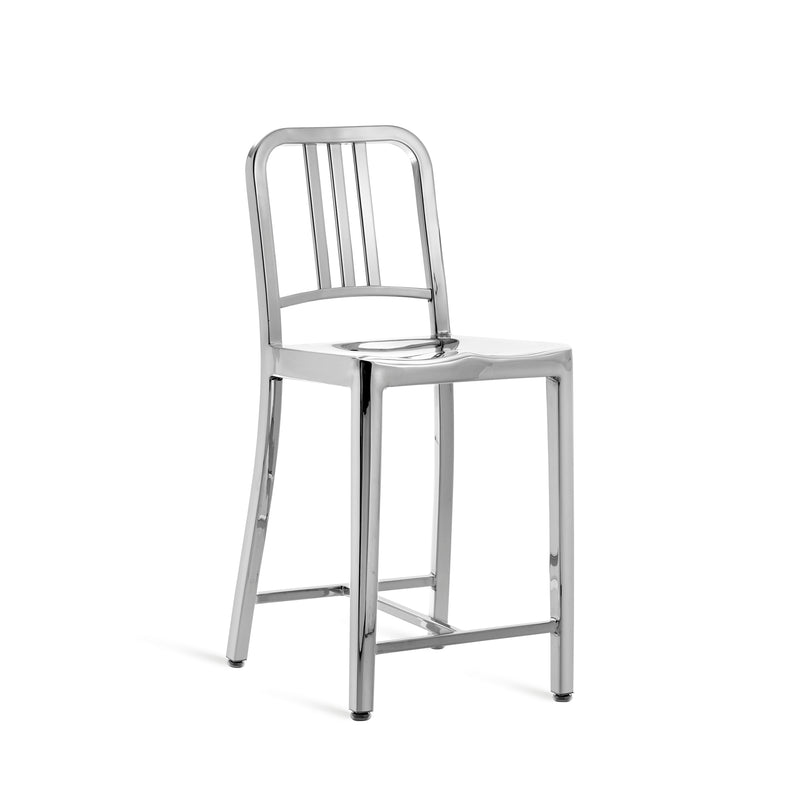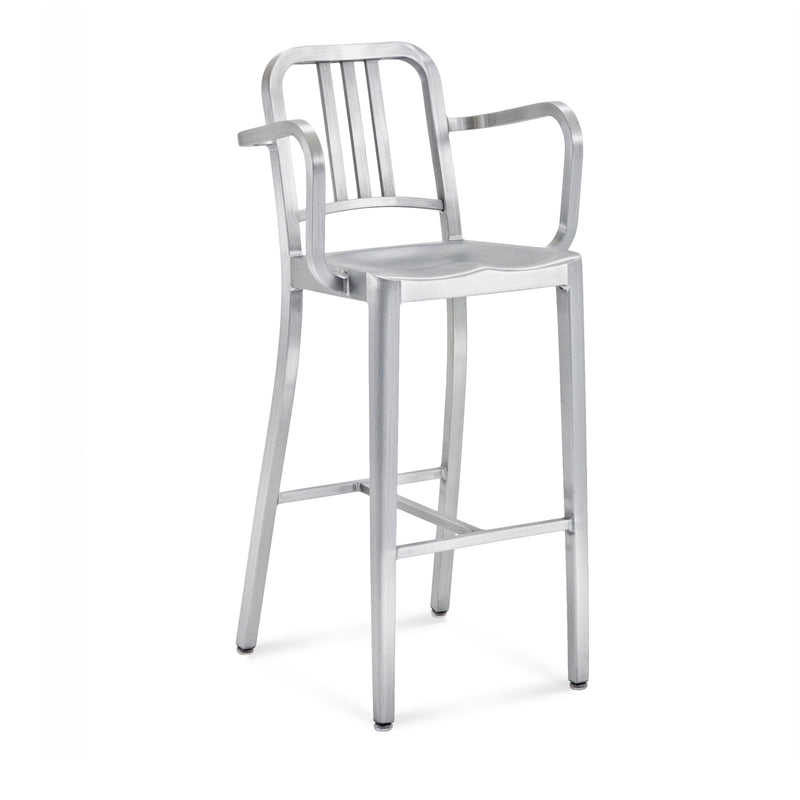
Wilton C. Dinges founded Emeco (Electric Machine and Equipment Company) in the 1940s in Hanover, Pennsylvania. During WWII the U.S government gave him a big assignment - make chairs that could withstand water, salt air and sailors. 'Torpedo-proof' was mentioned. Style didn't really factor in, but design very much did - Emeco designed not only a chair, but a unique 77-step process that combined engineering, chemistry and handcraft to make chairs to strong, they'd survive anything.
Aluminum was the obvious choice, being lightweight, non-corrosive, fire resistant and non-magnetic, so as not to interfere with the instruments on board. However, in its natural form, aluminum is a soft metal - think of a soda can. Together with Alcoa experts, Wilton C. Dinges developed a 77-step process that turns ordinary scrap aluminum - a wartime necessity - into chairs of extraordinary strength. So strong that Dinges proved his point to US Navy officials by throwing a chair out of a 12th storey Chicago hotel room. The unscathed chair sealed the contract. The 1006 Navy Chair® was so durable, it had an estimated life cycle of 150 years and far exceeded the Navy’s specifications. The rest, as they say, is history.
And history is still in the making. To this day, we use the same 77-step process to build furniture so strong we guarantee it for life. At our factory in Hanover, Pennsylvania, craftsmen continue to form, weld, grind, heat-treat, hand brush and anodize recycled aluminum to make furniture that will outlive us all. No one else makes chairs this way. No one can. It takes a human eye to know when the process is done right, and it takes human hands to get it that way.
The 1006 Navy Chair® - a humble but proud four-legged chair, weighing only seven pounds but ranked right up there alongside such unimpeachable symbols of no-nonsense American ingenuity as rag-top Jeeps, Converse high-tops and button fly Levi’s.

























